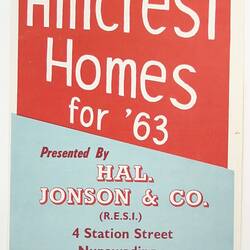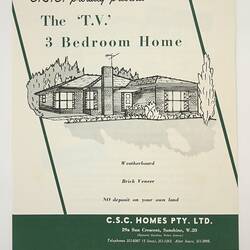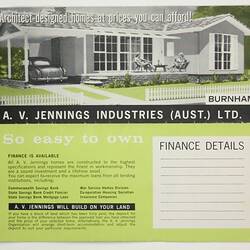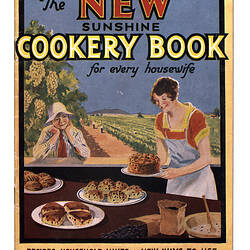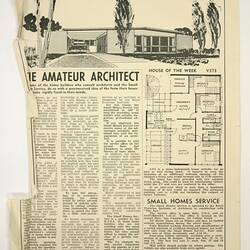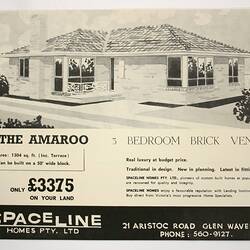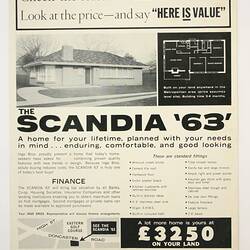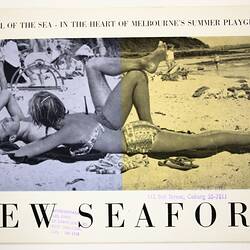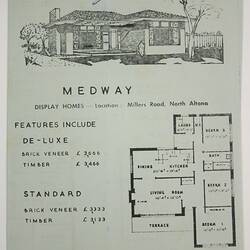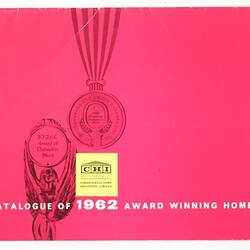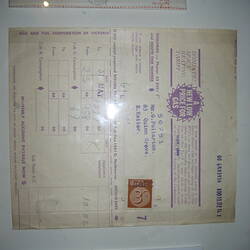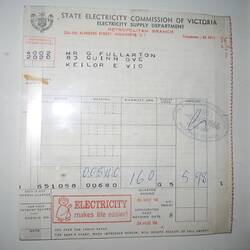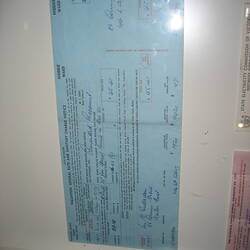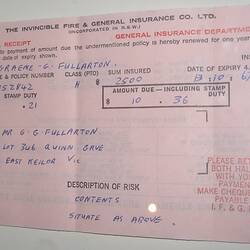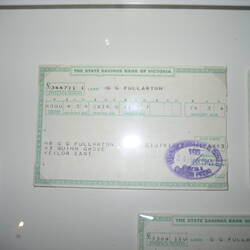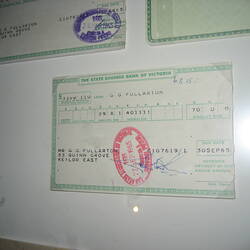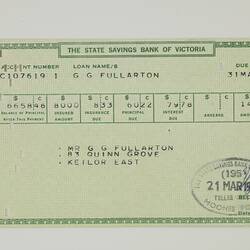Graeme Fullarton was born on 4 March 1936. He grew up with his brother Bruce and his parents in Moonee Ponds. In 1959, at age 23, Graeme Fullarton purchased land in Keilor East with his brother. The brothers chose to live there as they had a strong connection with their family and wanted to build their new homes in their local area. They chose adjoining blocks in the new estate, to be near each other.
Graeme purchased land in Quinn Grove, Keilor East, in November 1959. Originally farmland, it was owned by William Fox and Michael Fox of Keilor Farmers, but the sale of the individual blocks was managed by developer Leo Grodeck of 53 Lansell Road, Toorak. Graeme had first seen the land in 1956 but the price had doubled in the three years before he saw it again, so he decided he had better hurry up and put a deposit down before it was out of reach. It cost him about £700.
Graeme chose his block of land because it had a wide frontage, and was one of the largest blocks in the street so he could extend his house if he wanted to. His brother Bruce chose a block of land behind Graeme's. Because Bruce was a plumber, he also selected a large block so he would have room for his work equipment.
Graeme was 30 years old and his wife Elaine was 24 when they married in September 1964. They met through the Scouting movement as Scout leaders. Plans had been drawn up for their new house in February 1964 and soon after their wedding they began building their new home. Bruce began building about the same time as it was cheaper to build two houses with the same builder. He had married about 18 months before Graeme.
When searching for a house design, Graeme and Elaine Fullarton collected about 100 housing brochures over a six month period. They collected these from builders all over Melbourne, including the booming areas in the east and south. However, because of Graeme's family connections in the west, they chose a home design by a local builder. Their triple fronted brick veneer home was based on a design by E.W. Hales & Son of Footscray and was built in 1964 by J.R. Donnelly & Co, home builders of Glenroy. Their home differed slightly from the Hales standard house design - they changed the hot water system and heater, and had no 'line' pattern on their chimney and windows.
Graeme and Elaine's house construction was finished within five months, and they moved in during either October or Christmas 1966. Their new home had several innovations which they enjoyed, such as built-in wardrobes and a separate entry to the backyard that didn't go through the laundry. The Fullarton's built a gate in their back fence so that their family and Graeme's brother's family and dog could have access to each other's yards and homes. When Graeme and Elaine moved in they had a number of convenient gas appliances - hot water unit, space heater, stove and refrigerator - the latter was second-hand from Graeme's parents. They managed to buy a second hand television in their second year in the house, however they couldn't afford carpet for about five or six years after they moved in. They built a carport/workshop about three years after they moved in.
Keilor East was mainly a working class area, and a newly developing suburb. There were only a few hundred people living in the area near the Fullarton's house. There also was a lack of infrastructure in the new suburb when the Fullarton's first lived there. There was no sewerage connection to the area and the soil wasn't suitable for septic tanks, so they used a sanitary pan toilet for about two or three years. They were then were allowed to install a septic tank which they used for another six or seven years. In about their 10th year in the house they finally had sewerage connected to their home. When they first moved in to the area there were also no footpaths, drains or made [bitumen] roads. The only bus service was several blocks away and only ran hourly.
After a neighbourhood party in 1966 at which all the new residents complained about the lack of infrastructure in the area, Mr Fullarton found himself nominated for the Keilor Council elections and was successfully elected as an independent councillor. Graeme was a councillor for several years and was then elected Mayor in 1969-1970. His parents had been councillors at Essendon Council, so there was a family tradition of serving the community, but Graeme was particularly motivated by the hard living conditions in the new suburb of Keilor East in the 1960s.
Graeme described himself and his wife as 'pioneers'. He remembers that there was a great camaraderie between the neighbours - partly because many of them had grown up in the surrounding older suburbs like Moonee Ponds, Essendon, Footscray and Sunshine, and many others were connected through Scouting or other activities in the area, but partly because they shared the same 'pioneering' experiences. The neighbours became a close community. At one point there was a series of physical assaults occurring in Melbourne, and the wives in the neighbouring houses near the Fullarton's developed a 'panic system', whereby if they were in some sort of trouble they would hang a tea-towel in the kitchen window to alert their neighbours. The system never had to be used.
After being in the house for about 13 years, in 1976 Graeme and Elaine sold it for about £34,000 and moved to Diamond Creek in the outer north of Melbourne. Mr Fullarton and his wife later divorced.
The Graeme Fullarton collection includes: some of the legal documents relating to Graeme's land purchase; about 100 brochures from a wide range of builders around Melbourne; the house construction plan; mortgage repayment, land valuation, rates and sanitary services accounts; a quotation relating to the connection of the telephone service; house content insurance accounts; and gas and electricity accounts from the first years in the home. Family photographs show the house being built, from its footings through to the roof being put on. This collection of approximately 150 items evokes the 'great Australian dream' of owning a home.
More Information
-
Keywords
-
Authors
-
Article types

